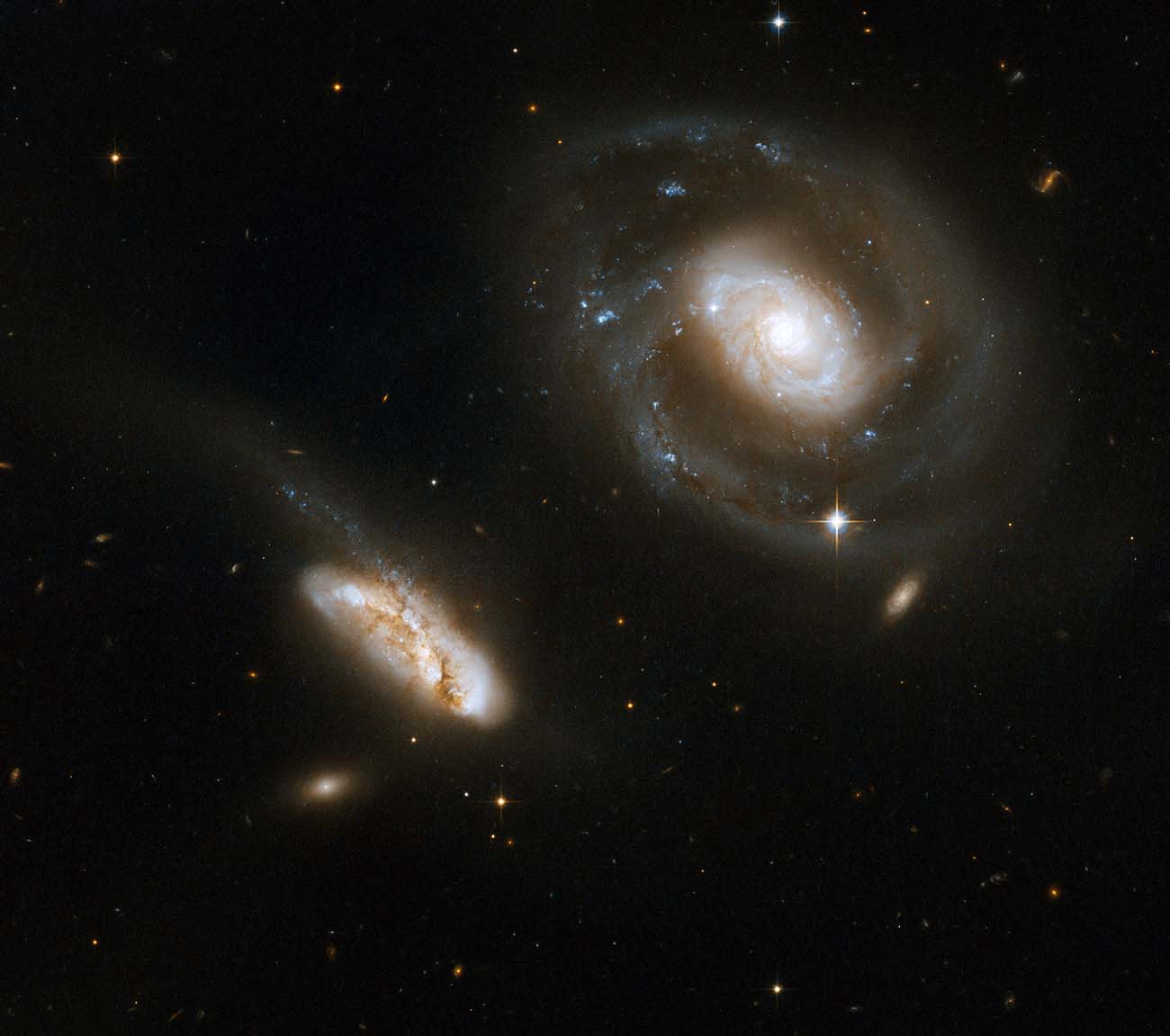STScI: NASA’s Webb Telescope Will Explore the Cores of Merging Galaxies

This is a stunning pair of interacting galaxies, the barred spiral Seyfert 1 galaxy NGC 7469 (Arp 298, Mrk 1514), a luminous infrared source with a powerful starburst deeply embedded into its circumnuclear region, and its smaller companion IC 5283. This system is located about 200 million light-years away from Earth in the constellation of Pegasus, the Winged Horse. This image is part of a large collection of 59 images of merging galaxies taken by the Hubble Space Telescope and released on the occasion of its 18th anniversary on 24th April 2008. Credits: NASA, ESA, the Hubble Heritage (STScI/AURA)-ESA/Hubble Collaboration, and A. Evans (University of Virginia, Charlottesville/NRAO/Stony Brook University)
Researchers will study four nearby merging galaxies in unprecedented detail.
Merging galaxies often appear lit up like a fireworks display. The meeting of their gas flows accelerates star formation and feeds their central black holes. However, much of this activity, particularly where they are interacting, is shrouded by dust. Webb’s significantly more sensitive, sharper observations in infrared light will be able to see through the dust, leading to high-resolution data that will reveal far more about what’s happening at the cores of these galaxies.
When galaxies collide, it’s as if all the players in a symphony have begun a furious crescendo: As their stars and gas fall toward the center, star formation escalates. At the same time, the galaxies’ black holes engorge themselves and light up, releasing energy and material into the surrounding gas. These “overtures,” which continue for hundreds of millions of years, are brightest where the centers of galaxies – called nuclei – merge, and those areas are also filled with dust. Until now, high-resolution infrared observations from space that can pierce through the dust weren’t possible. NASA’s James Webb Space Telescope’s observations will return both infrared imagery and spectra that will allow researchers to add incredible detail to our understanding of the precise mechanics at work.
